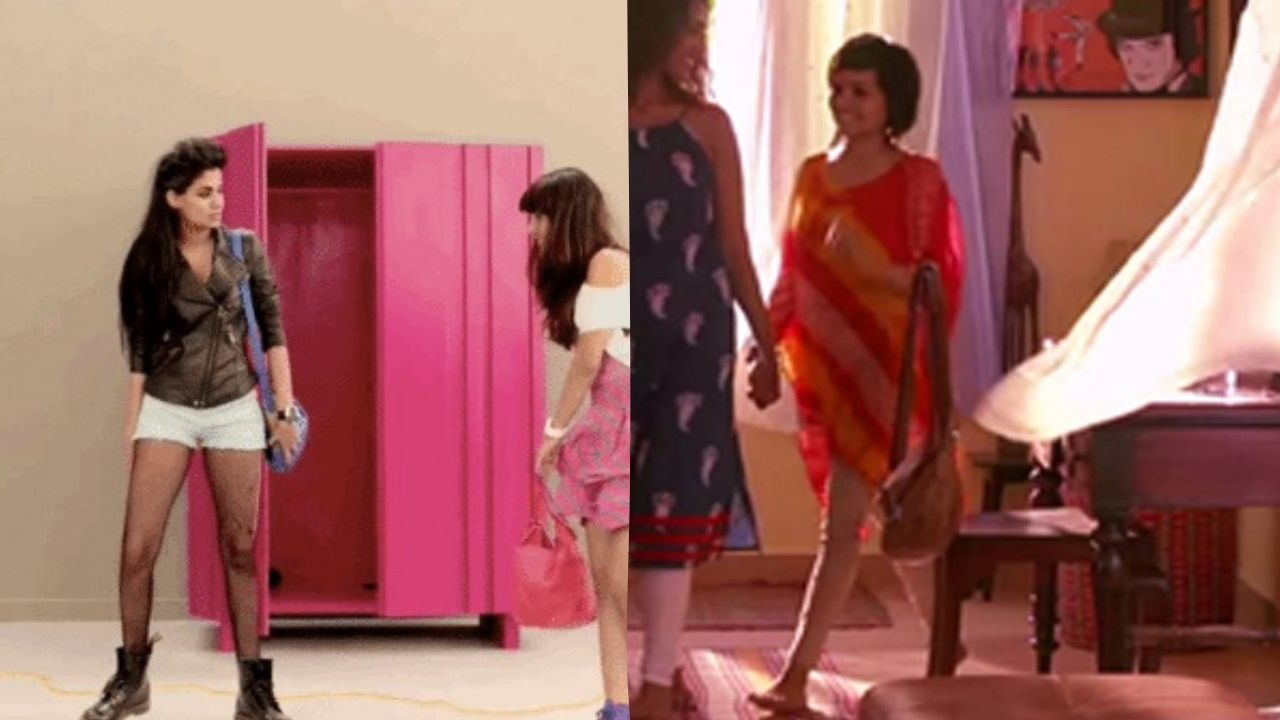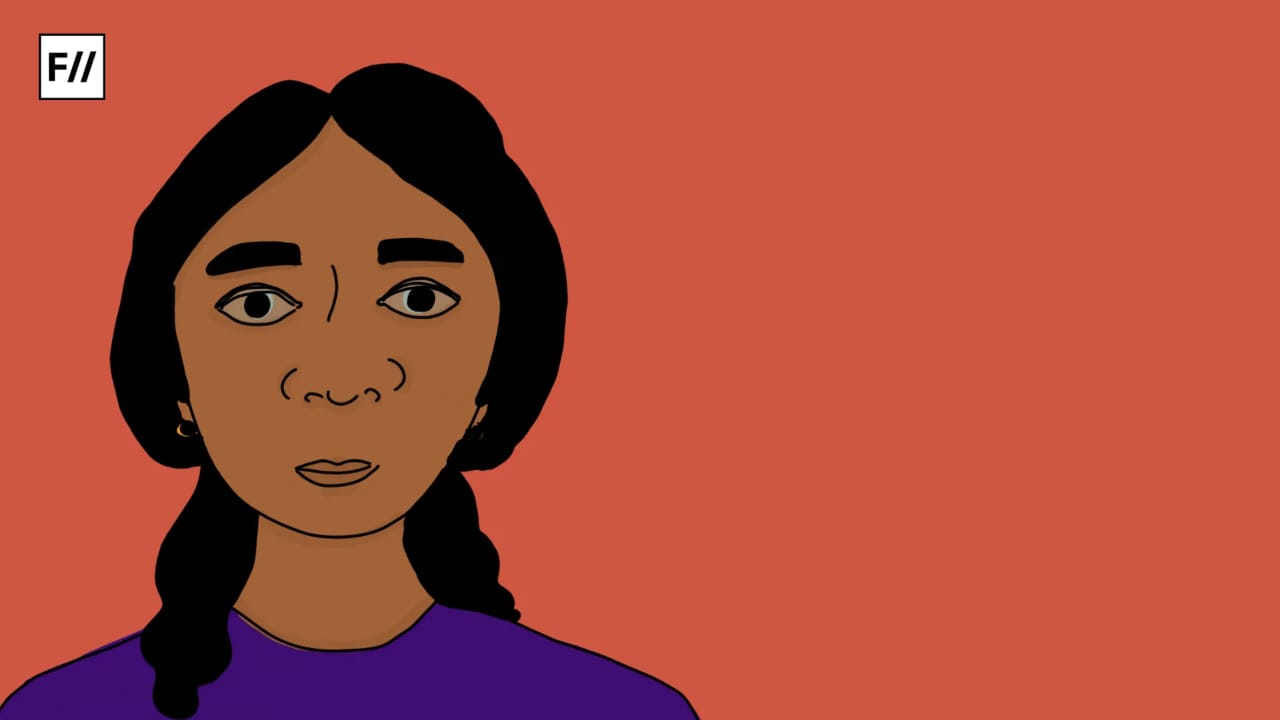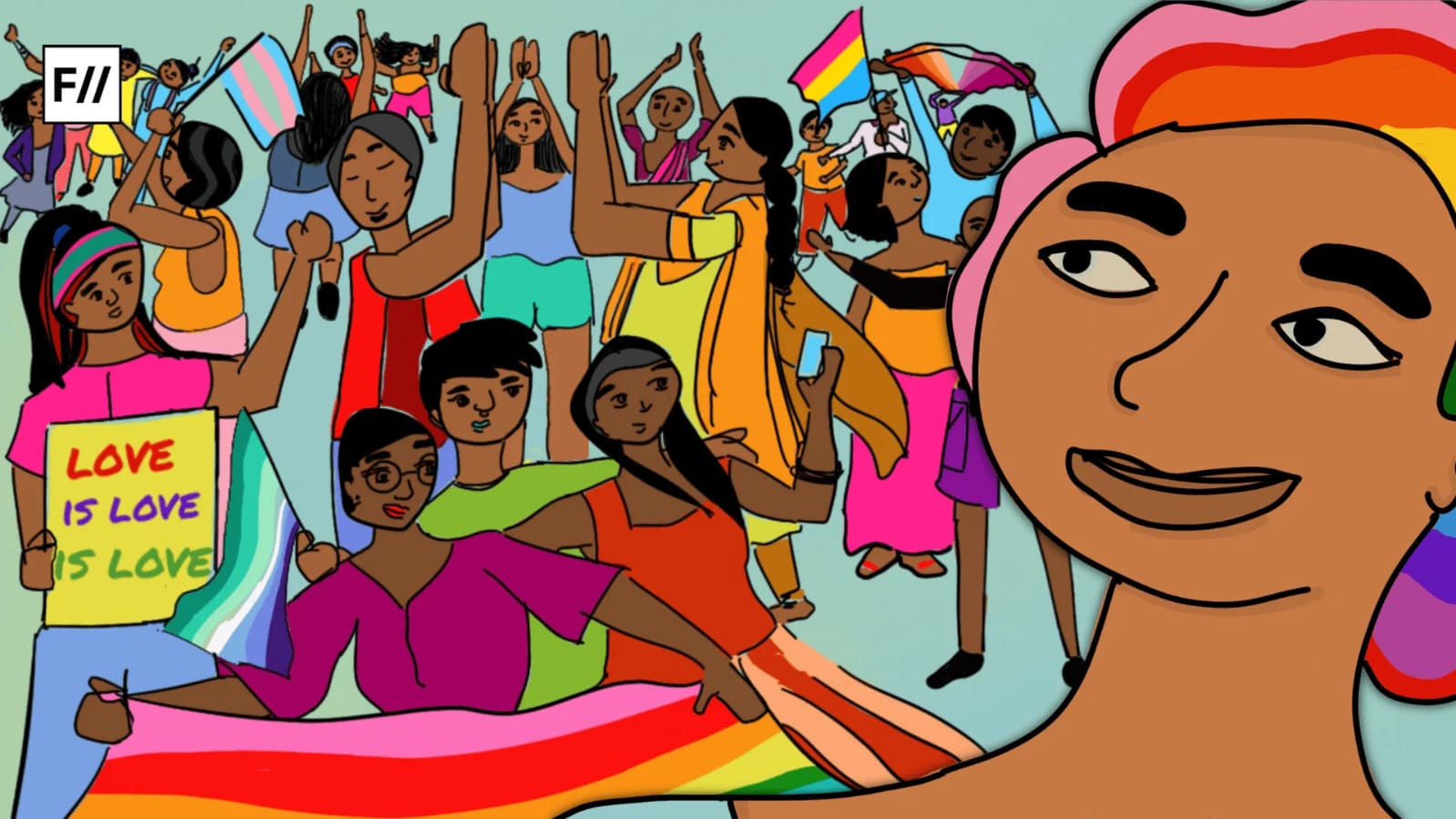When the e-commerce retail Myntra in collaboration with the ethnic apparel brand Anouk launched the ‘Bold is Beautiful’ advertisement campaign in 2015, one of the ads featuring two queer women in a live-in relationship went viral at a rate of knots, quickly becoming a major talking point in the country for, what was understood to be, its trailblazing ‘lesbian’ theme. Several news media platforms forcefully ascribed the ‘lesbian’ identity to the women portrayed, lauding Myntra for breaking new ground with the initiative. Soon after, however, numerous digital platforms started pointing out that the honour of creating the first ‘Indian lesbian ad’ had been incorrectly attributed to Myntra, revealing that the credit for achieving such a feat belongs to Fastrack.
Two years before the launch of the ‘Bold is Beautiful’ campaign, Fastrack had brought out an advertisement in 2013 which showed two women getting out of a shaky closet while adjusting their clothes and fixing their hair, the look on their faces communicating a kind of in-your-face queerness that is hard to miss, harder to ignore. A section of the media made sure that this ‘lesbian’ advertisement was not forgotten amidst the excitement Myntra’s advertisement had generated, so they urged their counterparts and readers alike to acknowledge Fastrack’s pioneering role in the representation of ‘lesbians’ in India’s rapidly evolving advertising industry. However, even as a section of the media was trying to report right, representation that this reporting demanded and entailed, and the politics of representation and the problems that it invariably brings about, was never paid the attention that it deserved.
The media declared that the queer characters portrayed in both the advertisements are lesbians, despite the fact that it is not explicitly stated in either of the two ads. Therefore, the lesbian identity label became mainstream media’s uncritical imposition rooted in the un-nuanced assumption that all cisgender women in same-sex relationships are by default lesbians. It helped reinforce the problematic idea that all those who are involved in same-sex relationships, or engage in same-sex sexual encounters, are essentially either gay or lesbian. Such simplistic representation intensifies the precarity of those at the margins.
When queer people’s sexual and romantic identities are fixed or are conflated, diversities that exist within queer communities are glossed over and ignored. Recognising and representing marginalised individuals and communities is a challenging and an intensely political task whose purpose is defeated when labels like “gay” or “lesbian” are indiscriminately employed to identify and homogenise queer relationships and communities using terms that people outside of queer communities are most familiar with.
The media declared that the queer characters portrayed in both the ads are lesbians, despite the fact that it is not explicitly stated in either of the two ads.
On rare occasions that queer lives are discussed in mainstream media, they are done in ways that are un-nuanced at best and ignorant at worst. The two cisgender women portrayed in the Myntra ad demonstrated their earnestness to be seen and gain acceptance as lovers. And the encounter between women in the Fastrack advertisement, most likely casual, did not end with them being given an identity label. You could ask, “Can we not imagine them to be lesbians?” We could. But we could also imagine them to be bisexual—either of them or both. Or maybe one of them is asexual homo-romantic, while her partner is demisexual bi-romantic. Or may be both of them are pansexual. Or perhaps they are yet to embrace and declare a decisive self-definition or are perhaps unwilling to be limited by the burden of labels that leads us to deny the fluid nature of human sexuality. What was not acknowledged in the media was that the queer possibilities are endless and infinite, so much so that they cannot be done justice to by hurried presumptions for the sake of easy representation.
Also Read: Representation for Representation’s Sake: Queerbaiting Is Not Cool
Sweeping generalisations about queer individuals and communities are oppressive and violent – they injure queer people’s sense of self. Even as subversive attempts are made to mainstream gay and lesbian identities in public discourse, many queer individuals having deeply marginalised identities are deprived of their right to visibility and recognition.
The diversity that exists within queer communities remain largely unacknowledged and unseen as efforts at inclusivity by the mainstream more often than not lead to the straight-jacketing of all queer relationships as essentially gay or lesbian. Such essentialisation invites erasure of various non-normative identities as new normativities are produced and sustained in public discourse and popular culture, owing to which only certain dominant identities are used to judge all queer relationships. It does facilitate visibility for a section of a queer community but at the cost of others who are also vulnerable and disempowered, who are sometimes more at risk of violence and discrimination.
Hence, while the mainstream pats itself on the back for its altruism and inclusivity, it could be held accountable for reinforcing exclusion. The ones who are denied representation, their right to exist gets invalidated, dismissed and they are invisibilised. Owing to the lack of representation there is a concomitant absence of the possibility of understanding. It reflects in the way conversations are had and debates and dialogues are framed on issues of gender and sexuality, which can be alienating for those for whom there exists little to no support. For instance, when a lesbian identifying women is in a relationship with a bisexual or a pansexual man, womyn or genderqueer individual, the relationship is described in a reductive binary: it is either a homosexual relationship or a heterosexual one.
Many queer people are made to ‘pass’ as one or the other and are forced to publicly abandon the identities that define their truth for the sake of conforming to the ones that dominate conversations, ones that are relatively more mainstreamed than the others. For example, when a trans man is in a relationship with a cisgender women and their relationship is mischaracterised as a ‘lesbian’ one, the trans man in the relationship gets misgendered and his agency to identify himself gets violated.
Queer possibilities are endless and infinite. They cannot be done justice to by hurried presumptions for the sake of easy representation.
Representations can only do justice to the represented when they are listened to and understood instead of being spoken over. While writing about queer people, the writer needs to delegate their agency to the person being written about so that they have the power to identify themselves however they wish. This requires understanding and empathy. The writer cannot unilaterally call the shots in a story that is not theirs. When the characters are fictitious, the writer’s awareness of diversities within queer communities is of critical importance. That India understands the Myntra ad as quintessentially “lesbian” is a case in point. While it meant representation for lesbian identifying women in India, possibilities of representation for women with various ‘Othered’ sexual and romantic identities shrank.
In order to undo this wrong, discussions need to be had about the politics of representation addressing marginalisations among the marginalised, peripheries within a periphery, so that possibilities are created for rights to be had and justice to be delivered while avenues are opened up for empathy, compassion, recognition and validation for those who are not easily allowed to be seen and heard.
About the author(s)
Sohini Chatterjee holds an MA in International Relations from South Asian University, New Delhi. She researches and writes on gender, culture and politics. Her writing has appeared in Kindle Magazine, Cafe Dissensus Everyday, Huffington Post India, Coldnoon: Travel Poetics, The Lookout Journal etc.





Nicely articulated and rightly pointed out. QUEER POSSIBILITIES ARE ENDLESS AND INFINITE. THEY CANNOT BE DONE JUSTICE TO BY HURRIED PRESUMPTIONS FOR THE SAKE OF EASY REPRESENTATION. Thank you